Tourism Philippines is booming, offering a diverse range of experiences from bustling cityscapes to pristine beaches. Let SIXT.VN be your guide to planning an unforgettable trip, providing seamless travel solutions tailored to your needs. Explore the hidden gems of the Philippines and create memories that last a lifetime with our expert travel advice and convenient services. Discover adventure travel, vacation packages, and cultural experiences in the Philippines.
1. What Makes Tourism Philippines So Appealing?
Tourism Philippines is appealing because it offers a unique blend of natural beauty, vibrant culture, and warm hospitality. The Philippines, an archipelago of over 7,000 islands, boasts stunning beaches, lush rainforests, and diverse marine life. According to the Philippine Statistics Authority, tourism contributed 12.7% to the country’s GDP in 2019, highlighting its economic importance and appeal.
Beyond its natural attractions, the Philippines is rich in cultural heritage, influenced by Spanish, American, and Asian traditions. This cultural fusion is evident in its cuisine, festivals, and architecture. Filipinos are known for their friendliness and hospitality, making visitors feel welcome and safe. Furthermore, the Philippines offers a wide range of activities, from diving and snorkeling to hiking and exploring historical sites, catering to various interests and budgets. The affordability of travel in the Philippines compared to other Southeast Asian destinations also adds to its appeal, making it an attractive option for budget-conscious travelers. The Philippines’ tourism industry is continuously evolving, with the Department of Tourism actively promoting sustainable and responsible tourism practices to preserve its natural and cultural resources.
2. What are the Top Cities to Visit in the Philippines for Tourism?
The top cities to visit in the Philippines for tourism include Manila, Cebu City, Davao City, and Vigan, each offering unique attractions and experiences.
- Manila: Known as the “Pearl of the Orient,” Manila is the capital city and a vibrant hub of culture and history. According to the Department of Tourism, Manila is a major gateway for international travelers. It features historical sites like Intramuros, a walled city showcasing Spanish colonial architecture, and numerous museums, parks, and shopping malls. Manila’s diverse culinary scene, including bustling street food markets like Binondo Chinatown, is a major draw for food enthusiasts.
- Cebu City: Cebu City is the oldest city in the Philippines, blending cosmopolitan living with island charm. It’s renowned for its historical landmarks, such as Magellan’s Cross and Fort San Pedro. The city also serves as a gateway to stunning beaches and diving spots. Canyoneering at Kawasan Falls is a popular adventure activity.
- Davao City: Davao City, one of the largest cities in the world by land area, offers a serene escape with attractions like Eden Nature Park and Malagos Garden Resort, home to the Philippines’ first chocolate museum. Mount Apo, the highest peak in the Philippines, is also located here, attracting mountaineers. Davao is committed to conservation, being home to the endangered Philippine Eagle.
- Vigan: Vigan, a UNESCO World Heritage site, is a beautifully preserved Spanish colonial town. Its cobblestone streets and unique architecture reflect a blend of Asian and European influences, providing a glimpse into the Philippines’ rich history. The city’s historical significance and cultural charm make it a must-visit destination.
Each of these cities offers a distinct perspective on the Philippines, catering to different interests, from history and culture to nature and adventure.
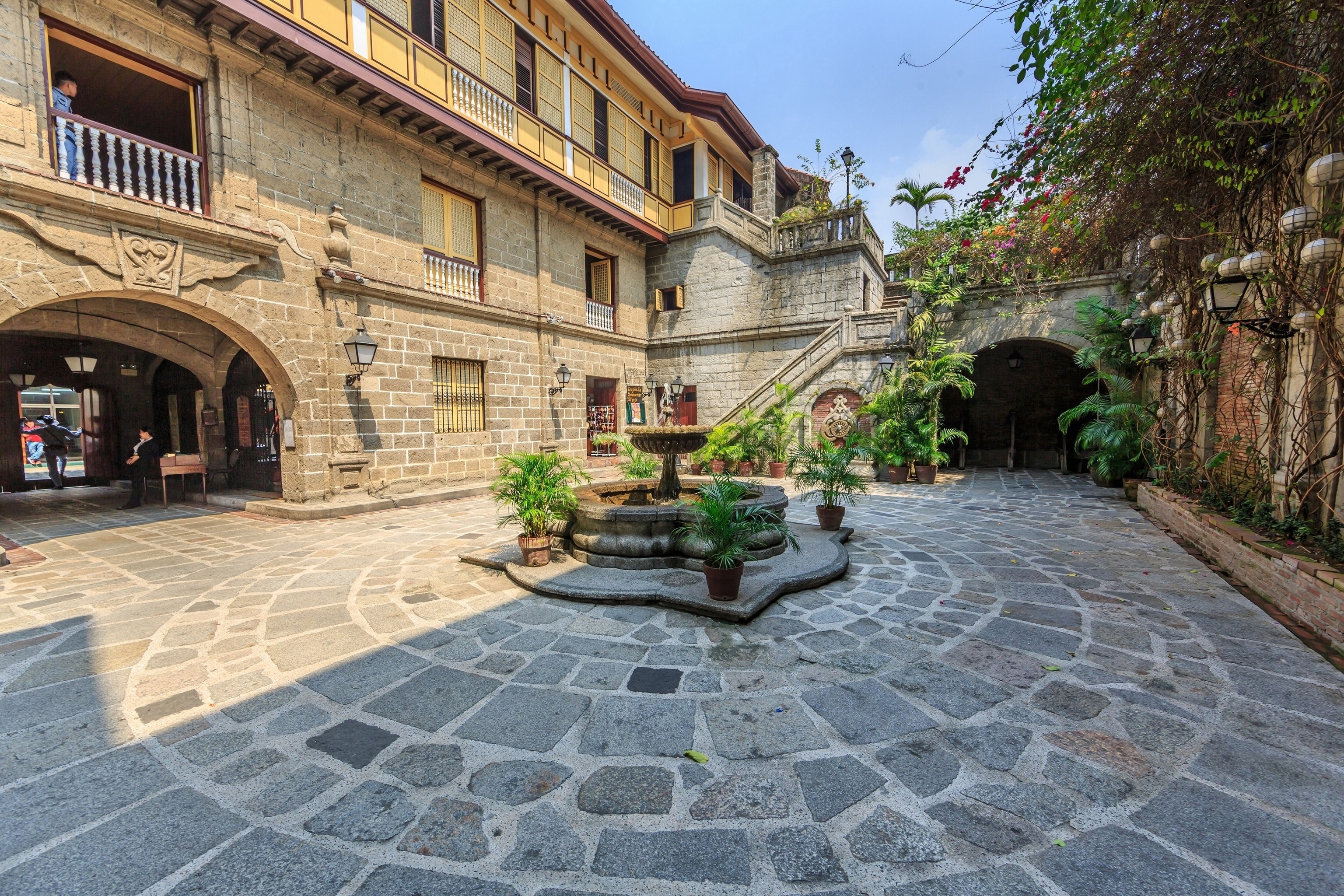 Casa Manila Museum
Casa Manila Museum
Casa Manila Museum displays the Spanish colonial era of the Philippines.
3. Which Philippine Beaches Should Be on My Tourism Itinerary?
Several Philippine beaches should be on your tourism itinerary, including Panglao Island (Bohol), El Nido (Palawan), Camiguin, and Siargao, each offering unique coastal experiences.
- Panglao Island (Bohol): As the primary gateway to Bohol, Panglao Island features white-sand beaches like Alona, Tawala, and Dumaluan. It’s a popular destination for diving and snorkeling. According to the Bohol Tourism Office, Panglao is known for its luxury accommodations and serves as a base for dolphin and whale watching tours at Pamilacan Island, and diving at Balicasag Island.
- El Nido (Palawan): El Nido is famous for its stunning limestone cliffs, clear waters, and vibrant coral reefs, perfect for swimming, diving, and kayaking. It’s a starting point for island-hopping tours to explore the Bacuit Archipelago’s hidden lagoons and beaches. El Nido is consistently ranked among the world’s best beaches by travel magazines.
- Camiguin: Known as the “Island Born of Fire,” Camiguin boasts seven volcanoes that have created unique natural attractions, including hot springs, waterfalls, and white-sand beaches. The island offers a serene and less crowded beach experience compared to more popular destinations. Camiguin’s natural beauty and unique geological features make it a standout destination.
- Siargao: Siargao is renowned as the surfing capital of the Philippines, attracting surfers with its high-quality waves, particularly at Cloud 9. Beyond surfing, Siargao offers beautiful reefs, blue waters, and a laid-back island culture, with stunning resorts. According to Siargao Tourism, the island’s popularity has grown due to its natural beauty and vibrant surfing community.
These beaches cater to diverse preferences, from luxury and diving to surfing and serene escapes, making them essential destinations in the Philippines.
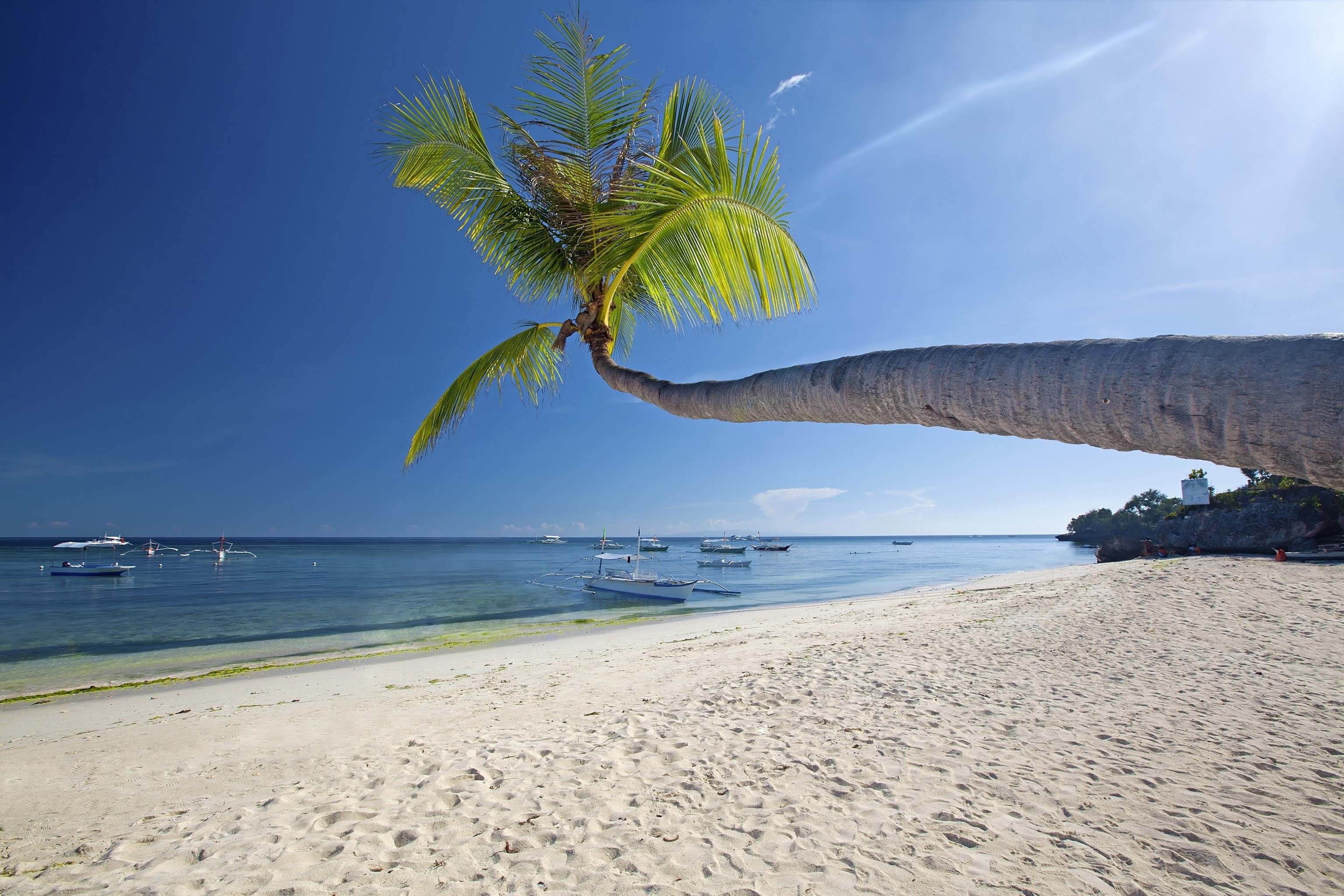 the beautiful beach on Panglao Island, Bohol
the beautiful beach on Panglao Island, Bohol
The white-sand shores and clear waters of Panglao Island is perfect for snorkeling.
4. Where Can I Experience Wildlife and Natural Beauty in Tourism Philippines?
You can experience wildlife and natural beauty in the Philippines at destinations like Calauit Island, Chocolate Hills (Bohol), and Ifugao Rice Terraces, each offering unique encounters with nature.
- Calauit Island: Calauit Island is known for its Calauit Safari Park, where you can see a variety of African animals in the Philippines. It also offers opportunities to swim with dugongs in its crystal-clear waters. Local conservation efforts ensure the protection of these marine mammals. Calauit Island combines wildlife conservation with eco-tourism.
- Chocolate Hills (Bohol): The Chocolate Hills in Bohol are a geological wonder consisting of over 1,200 hills that turn brown during the dry season, resembling chocolate mounds. According to UNESCO, these hills are a National Geological Monument. They provide a unique and picturesque landscape. The Chocolate Hills are a must-see natural attraction in the Philippines.
- Ifugao Rice Terraces: The Ifugao Rice Terraces, a UNESCO World Heritage site, are ancient agricultural terraces carved into the mountains of Ifugao. They showcase the harmony between humans and nature, with rice farming practices passed down for thousands of years. The terraces offer breathtaking views and cultural insights. These rice terraces are a testament to the ingenuity and cultural heritage of the Ifugao people.
These destinations offer diverse ways to appreciate the Philippines’ natural beauty, from wildlife encounters to geological wonders and cultural landscapes.
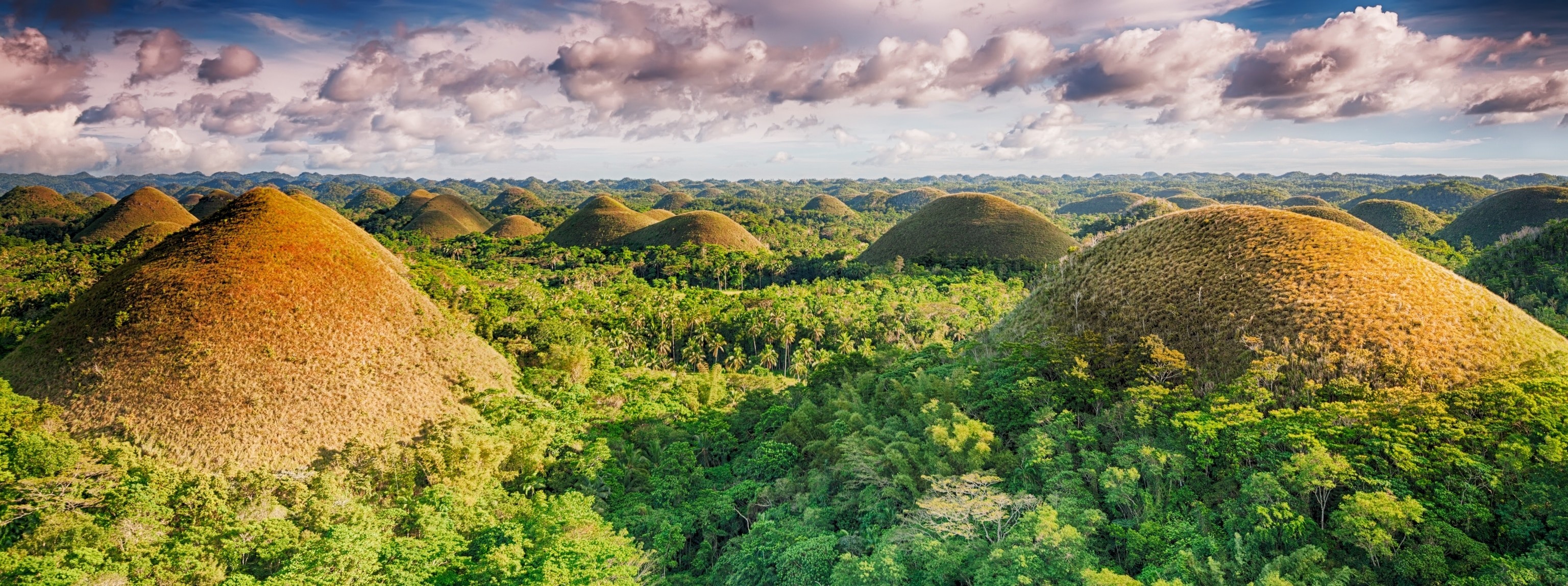 Panorama of The Chocolate Hills. Bohol, Philippines
Panorama of The Chocolate Hills. Bohol, Philippines
A panoramic view of the Chocolate Hills.
5. What National Parks in the Philippines are Best for Tourism?
The best national parks in the Philippines for tourism include Calauit Safari Park, Puerto Princesa Subterranean River National Park, and Mount Apo National Park, each offering distinct natural attractions and activities.
- Calauit Safari Park: Located on Calauit Island, this park is home to a variety of African animals, including giraffes and zebras, as well as endemic Philippine species. According to the Palawan Council for Sustainable Development, the park aims to conserve wildlife and promote eco-tourism. Visitors can enjoy wildlife spotting and learn about conservation efforts.
- Puerto Princesa Subterranean River National Park: This UNESCO World Heritage site features an underground river that flows directly into the sea. The park is known for its stunning cave formations and diverse ecosystem. Visitors can take boat tours to explore the underground river. The park’s unique geological features and biodiversity make it a top destination.
- Mount Apo National Park: Centered around Mount Apo, the highest peak in the Philippines, this park is a haven for mountaineers and nature enthusiasts. The park is home to diverse flora and fauna, including the Philippine Eagle. Hiking and bird-watching are popular activities. Mount Apo’s challenging terrain and natural beauty attract adventurers.
These national parks offer a range of experiences, from wildlife encounters to geological wonders and adventure activities, making them ideal for tourism in the Philippines.
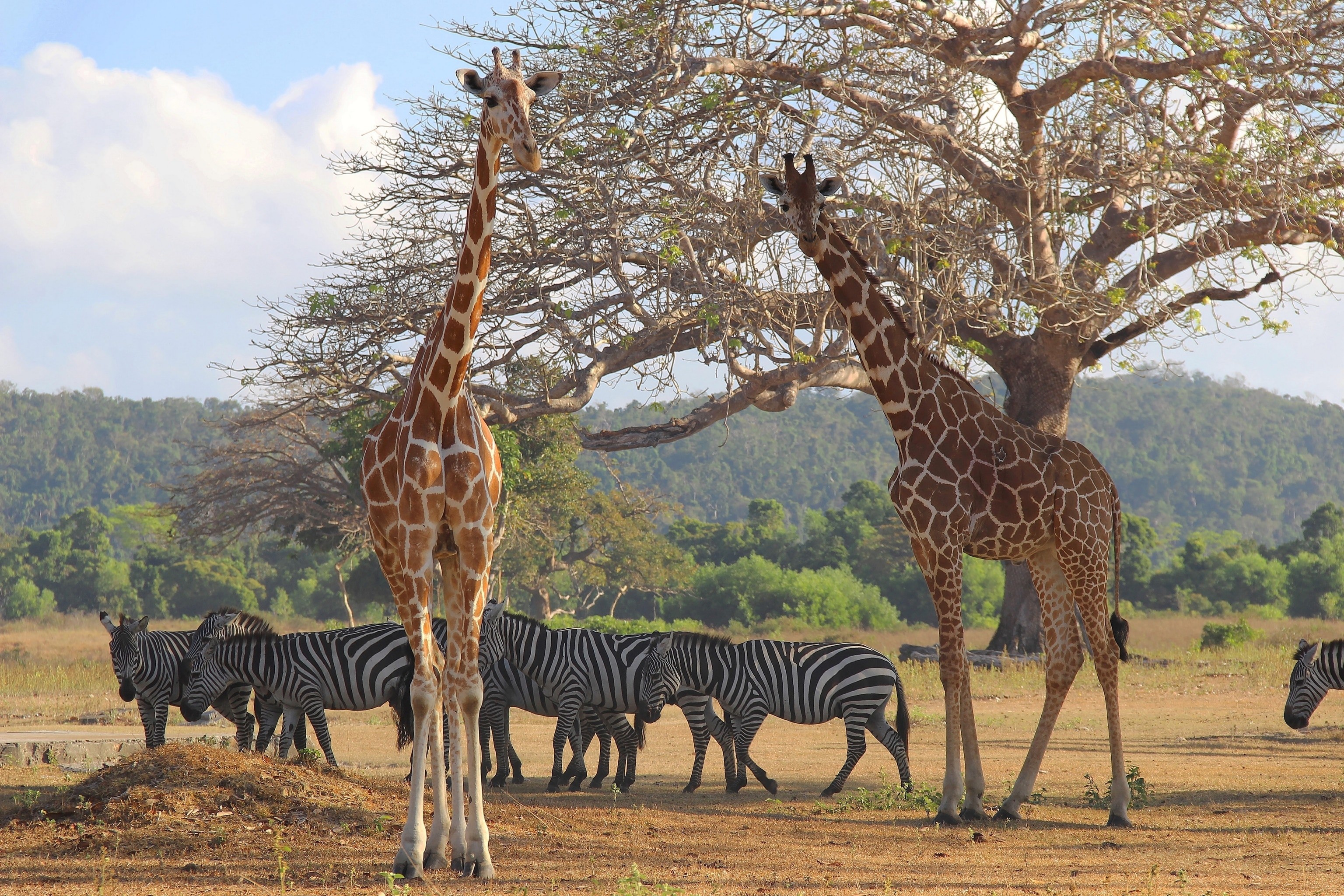 giraffes on savannah, Calauit safari park, Busuanga, Palawan, Philippines.
giraffes on savannah, Calauit safari park, Busuanga, Palawan, Philippines.
Walk amongst well-preserved wildlife at the Calauit Safari Park.
6. What Travel Requirements Should I Know Before Visiting the Philippines for Tourism?
Before visiting the Philippines for tourism, you should know the travel requirements, including passport validity, visa regulations, and recommended vaccinations.
- Passport Validity: Travelers to the Philippines must have a passport valid for at least six months beyond their intended stay. The Bureau of Immigration emphasizes this requirement to ensure smooth entry and exit.
- Visa Regulations: Many nationalities, including those from the United States, can enter the Philippines without a visa for tourism purposes for stays up to 30 days. For longer stays, a visa is required. The Department of Foreign Affairs provides detailed information on visa requirements based on nationality.
- Recommended Vaccinations: The World Health Organization recommends vaccinations for hepatitis A, hepatitis B, typhoid, and other diseases. Travelers should consult their healthcare provider for personalized medical advice.
- Other Health Precautions: Travelers should also be aware of potential health risks such as dengue fever and Zika virus, taking precautions like using mosquito repellent. The Department of Health provides updates on health advisories.
Being informed about these travel requirements helps ensure a safe and hassle-free trip to the Philippines.
7. When is the Best Time to Visit the Philippines for Tourism?
The best time to visit the Philippines for tourism is from December to April, during the dry season, offering ideal weather conditions for beach trips and outdoor activities.
- Dry Season (December to April): These months offer the most pleasant weather, with less rainfall and lower humidity. According to the Philippine Atmospheric, Geophysical and Astronomical Services Administration (PAGASA), this period is characterized by sunny days and clear skies, perfect for exploring the islands.
- Hot Season (March to May): These months are the hottest, with temperatures often exceeding 85 degrees Fahrenheit. This is still a good time to visit if you enjoy swimming and water activities.
- Wet Season (June to November): This period brings the potential for typhoons, with July to October being the wettest months. While travel is still possible, it’s important to monitor weather forecasts and be prepared for rain.
Choosing to travel during the dry season ensures the best possible experience for enjoying the Philippines’ beaches, natural attractions, and outdoor adventures.
8. What Should I Pack for a Tourism Trip to the Philippines?
When packing for a tourism trip to the Philippines, include lightweight clothing, swimwear, rain gear, comfortable shoes, sunscreen, and insect repellent to prepare for the tropical climate and various activities.
- Lightweight Clothing: Pack light, breathable fabrics like cotton and linen to stay comfortable in the tropical heat. Casual attire is suitable for most occasions.
- Swimwear: Essential for enjoying the Philippines’ beautiful beaches and water activities.
- Rain Gear: A lightweight raincoat or umbrella is crucial, especially if traveling during the wet season.
- Comfortable Shoes: Bring comfortable walking shoes or sandals for exploring cities and beaches.
- Sunscreen: Protect your skin from the strong tropical sun with high SPF sunscreen.
- Insect Repellent: Mosquito repellent with DEET is essential to protect against mosquito bites and mosquito-borne diseases.
- Waterproof Bag: A waterproof bag is useful for keeping electronics and valuables dry during water activities or rain.
Packing these essential items will help you stay comfortable and prepared for the diverse experiences the Philippines offers.
9. How Can I Get Around the Philippines Efficiently for Tourism?
You can get around the Philippines efficiently for tourism by utilizing flights, boats, and local transportation like jeepneys and taxis, depending on your destination and budget.
- Flights: Domestic flights are the quickest way to travel between islands. Major airlines like Philippine Airlines and Cebu Pacific offer numerous daily flights connecting major cities and tourist destinations.
- Boats: Ferries and boats are a common mode of transportation for inter-island travel, especially for destinations not easily accessible by air. Companies like 2GO Travel provide ferry services to various islands.
- Jeepneys: In cities like Manila and Cebu, jeepneys are a popular and affordable way to get around. These colorful buses offer a unique cultural experience.
- Taxis and Ride-Hailing Services: Taxis and ride-hailing apps like Grab are readily available in major cities, providing convenient transportation options.
- Buses: Buses are a cost-effective option for traveling between cities on the same island.
Combining these transportation options allows for efficient and flexible travel throughout the Philippines, catering to different preferences and budgets.
10. What are Some Cultural Dos and Don’ts for Tourism in the Philippines?
Some cultural dos and don’ts for tourism in the Philippines include using respectful terms, being friendly, and avoiding confrontational behavior to show respect for Filipino customs and traditions.
- Use Respectful Terms: Address elders with terms like “Sir” or “Ma’am,” and use familial words like “Tito/Tita” (Uncle/Aunt) and “Lolo/Lola” (Grandfather/Grandmother) to show respect. Using “Po” and “Opo” are terms of respect.
- Be Friendly: Filipinos are known for their warm hospitality, so be friendly and reciprocate their gestures.
- Do Not Refuse Hospitality: It’s considered rude to refuse food or hospitality offered to you.
- Do Not Be Confrontational: Avoid losing your temper or being confrontational in public.
- Dress Appropriately: When visiting churches or religious sites, dress modestly to show respect.
- Be Mindful of Personal Safety: As with any travel destination, be mindful of your belongings and avoid walking alone at night.
- Do Not Insult the Philippines: Never make derogatory remarks about the Philippines or its people.
Following these cultural guidelines helps ensure a respectful and enjoyable experience while immersing yourself in the Filipino culture.
Planning a trip to the Philippines? SIXT.VN offers tailored services to make your journey seamless and unforgettable. From airport transfers and hotel bookings to curated tours of Manila and beyond, we’ve got you covered.
Here’s how SIXT.VN can transform your Philippine adventure:
- Effortless Airport Transfers: Start your trip stress-free with our reliable airport transfer services. We ensure you reach your hotel comfortably and on time.
- Handpicked Hotels: Choose from a selection of the best hotels in the Philippines, carefully selected for their comfort, location, and amenities. Whether you’re looking for a luxury resort or a cozy boutique hotel, we have options to suit every taste and budget.
- Customized Tours: Discover the Philippines with our expertly designed tours. Explore the historical sites of Intramuros, indulge in Manila’s vibrant street food scene, or venture to the stunning beaches of Palawan. Our tours are tailored to your interests, ensuring a unique and memorable experience.
- 24/7 Support: Our dedicated support team is available around the clock to assist you with any queries or concerns. We are committed to providing you with exceptional service throughout your trip.
Ready to explore the Philippines with ease and confidence? Contact SIXT.VN today and let us help you create the perfect itinerary.
Address: 260 Cau Giay, Hanoi, Vietnam
Hotline/WhatsApp: +84 986 244 358
Website: SIXT.VN
Tourism Philippines FAQs:
- What is the best time of year to visit the Philippines? The best time to visit the Philippines is during the dry season, from December to April, when the weather is sunny and dry.
- Do I need a visa to visit the Philippines? Many nationalities can enter the Philippines without a visa for tourism purposes for stays up to 30 days. Check the specific requirements based on your nationality.
- What are the top tourist attractions in the Philippines? Top attractions include Manila, Cebu City, Chocolate Hills, and the beaches of Palawan.
- Is it safe to travel in the Philippines? The Philippines is generally safe for tourists, but it’s important to be aware of your surroundings and take precautions against petty theft.
- What is the local currency in the Philippines? The local currency is the Philippine Peso (PHP).
- What languages are spoken in the Philippines? Filipino and English are the official languages.
- What should I pack for a trip to the Philippines? Pack lightweight clothing, swimwear, sunscreen, insect repellent, and comfortable shoes.
- How can I get around the Philippines? You can travel by domestic flights, boats, jeepneys, taxis, and buses.
- What are some cultural customs to be aware of? Use respectful terms when addressing elders, be friendly, and avoid confrontational behavior.
- What are the best beaches to visit in the Philippines? Popular beaches include Alona Beach in Panglao, El Nido in Palawan, and beaches in Siargao.
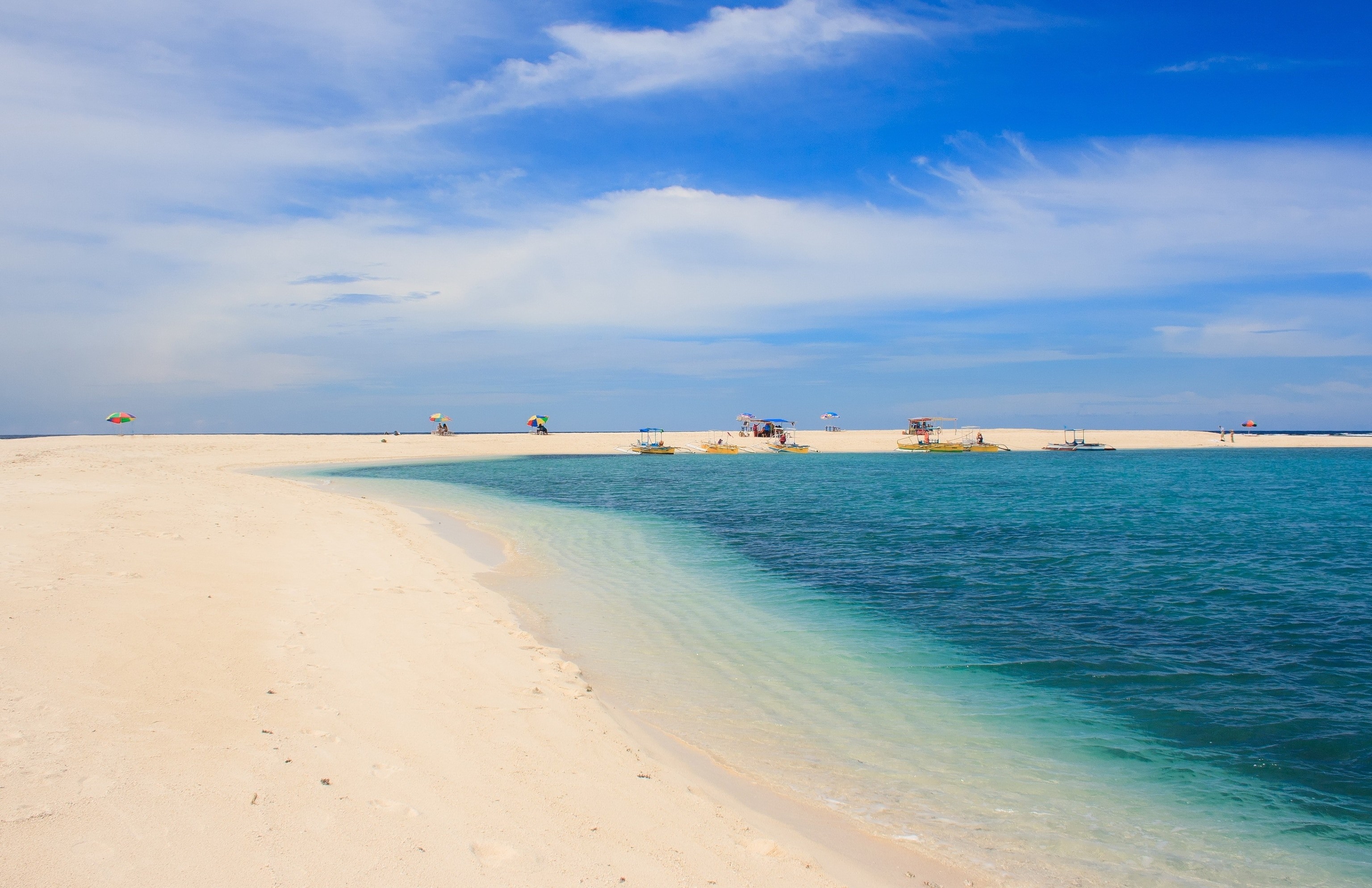 White island, Camiguin island, Philippines.
White island, Camiguin island, Philippines.
It’s easy to find peace amongst the picturesque and uninhabited landscape of White Island.
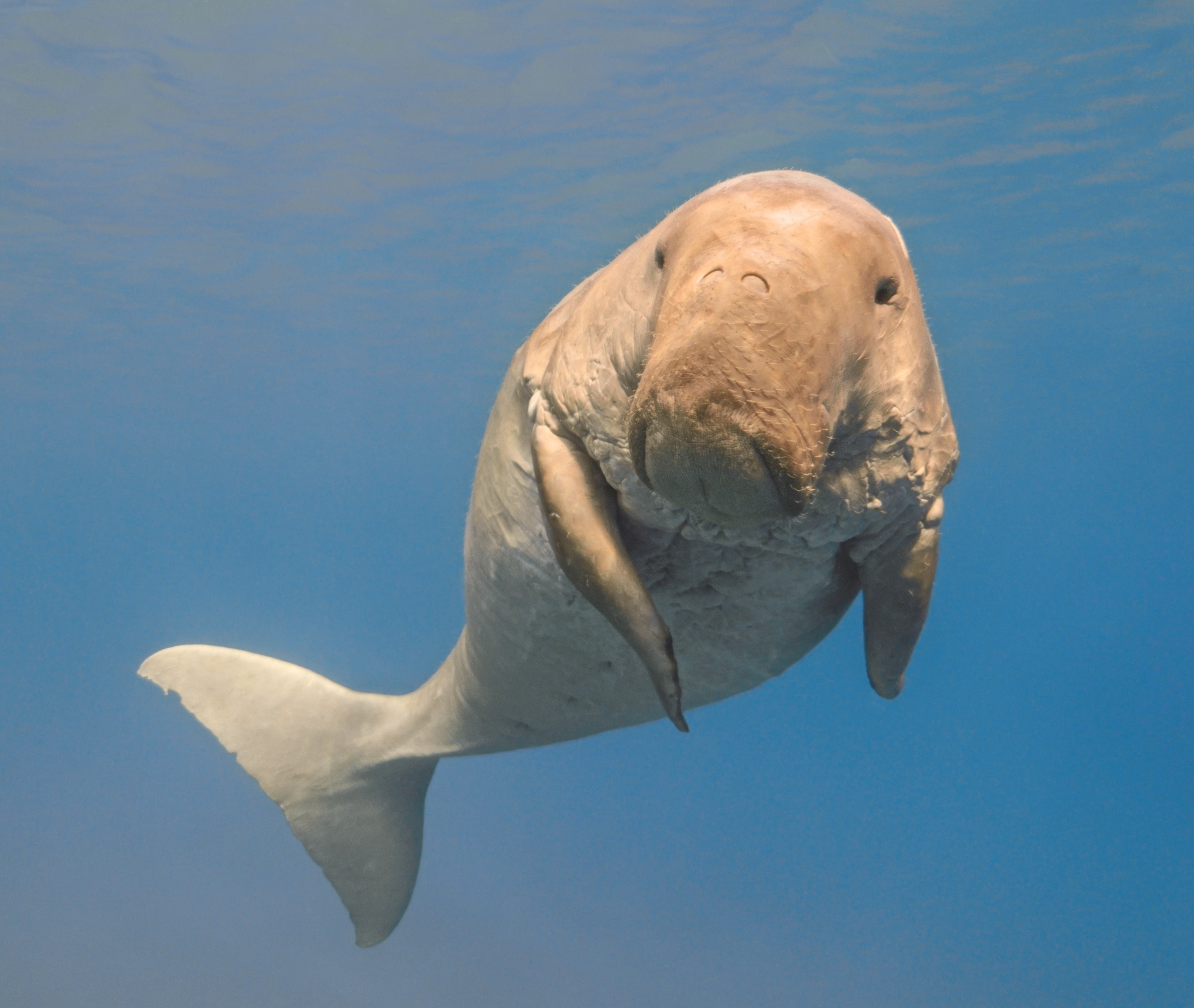 dugong (seacow or sea cow) swimming in the tropical sea water.
dugong (seacow or sea cow) swimming in the tropical sea water.
A dugong is similar to a manatee seen swimming in the water.
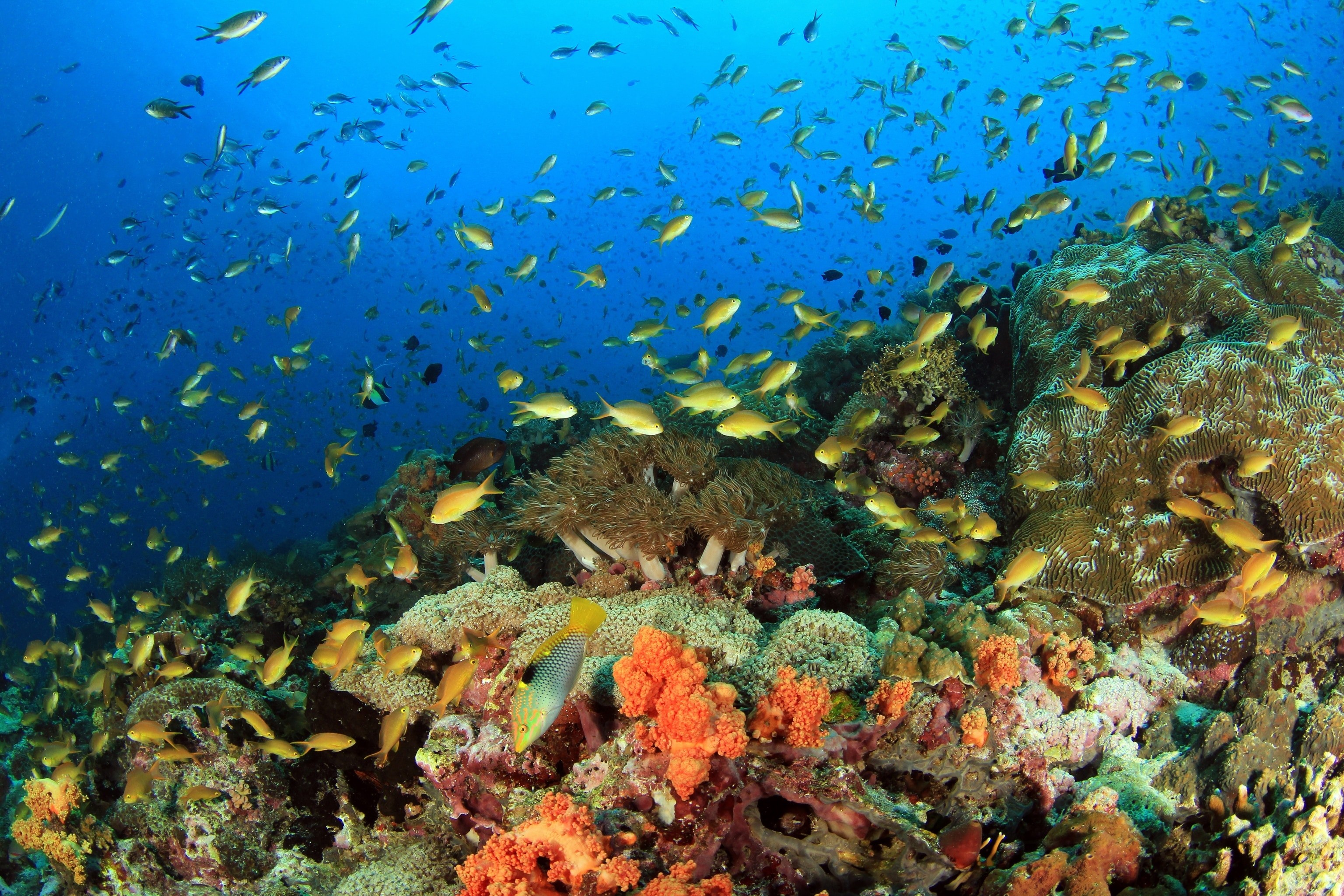 colorful Coral Reef with Schools of Fish against Blue Water, Pescador Island, Philippines
colorful Coral Reef with Schools of Fish against Blue Water, Pescador Island, Philippines
A school of fish help nurture the local ecosystem at a coral reef.
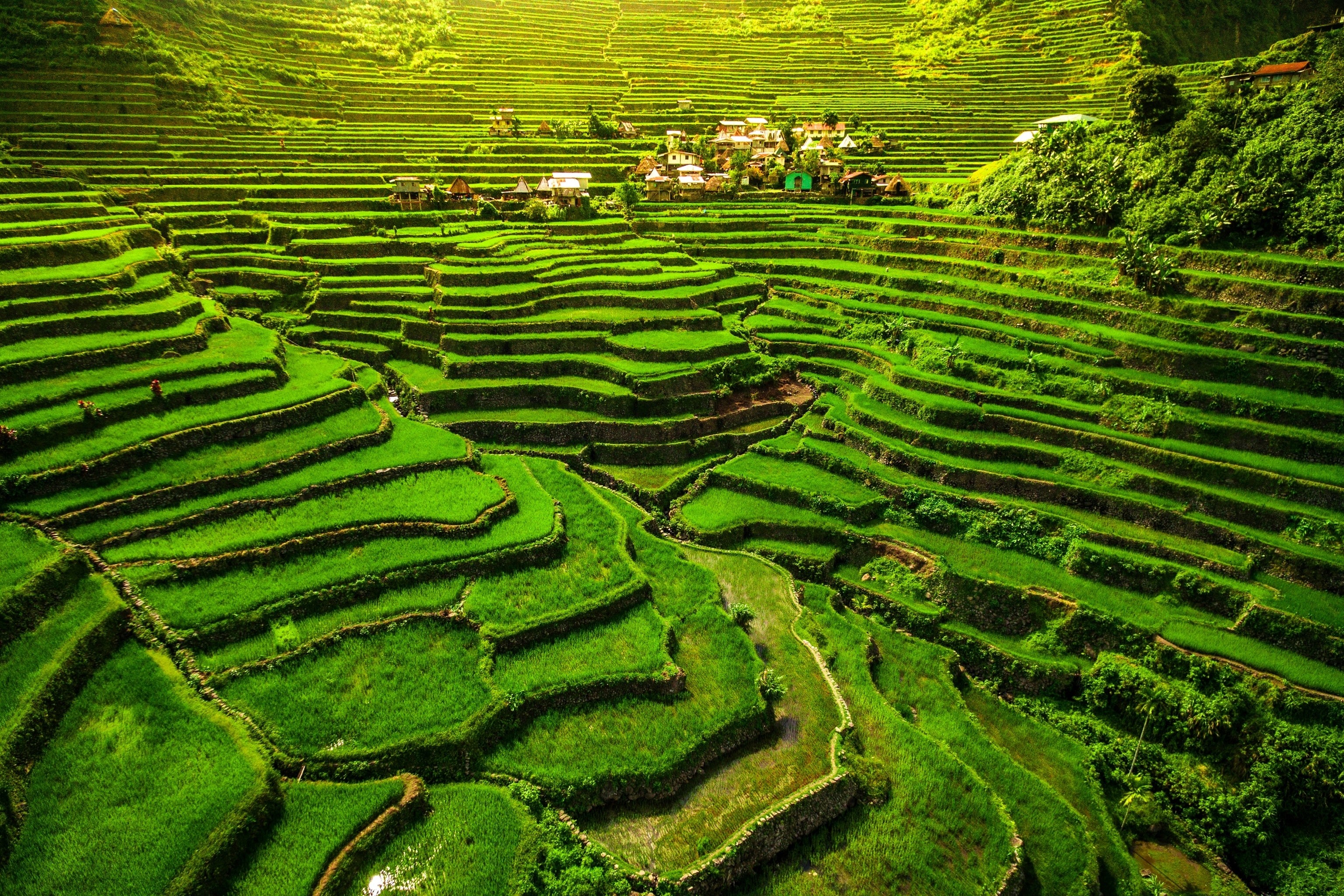 world heritage Ifugao rice terraces in Batad, northern Luzon, Philippines.
world heritage Ifugao rice terraces in Batad, northern Luzon, Philippines.
Discover ornate rice terraces while exploring in Ifugao.
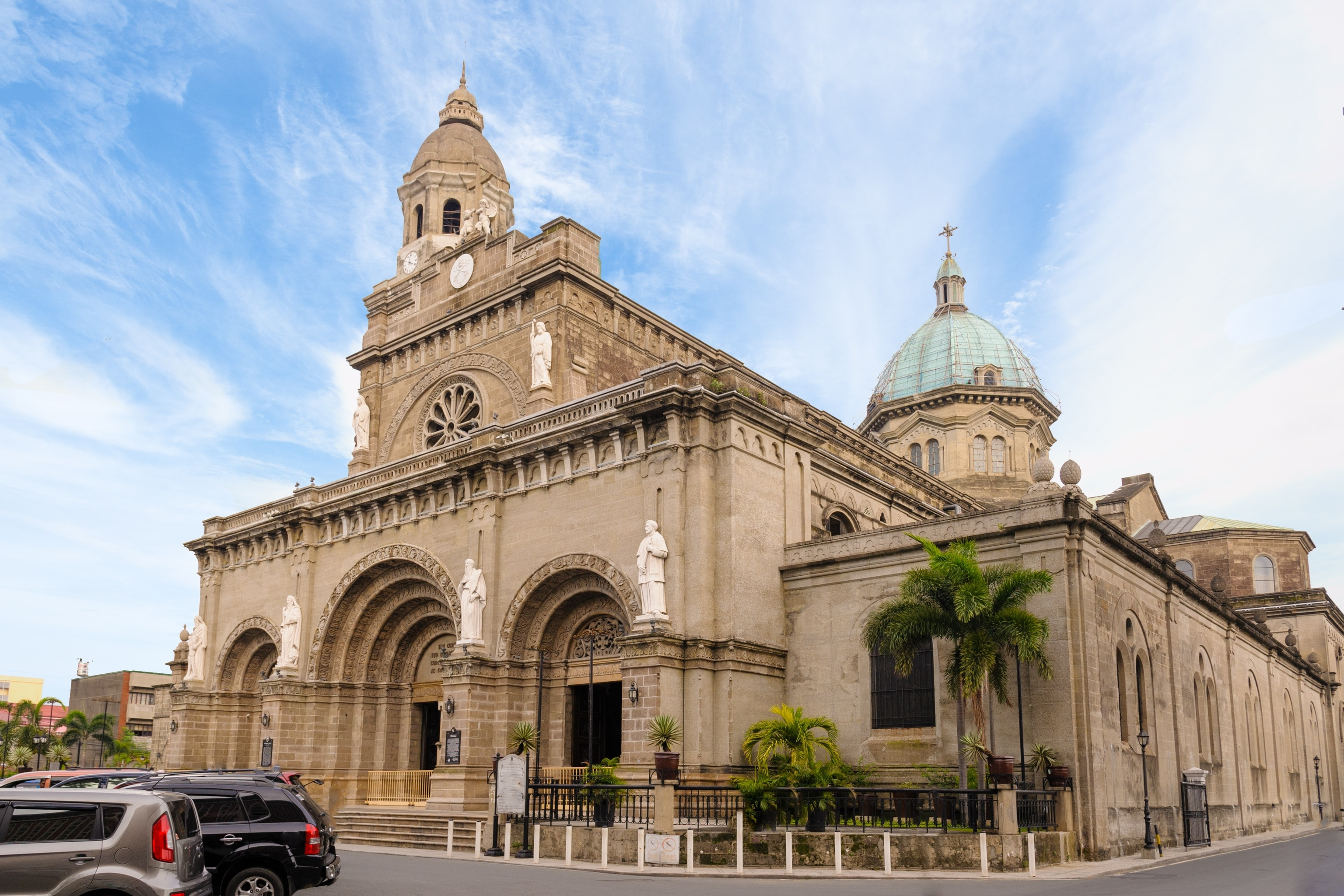 Manila Cathedral, Intramuros, Manila, Philippines
Manila Cathedral, Intramuros, Manila, Philippines
You’ll find churches like the Manila Cathedral are common throughout the Philippines, where Catholicism is the dominant religion.



